#EVManufacturing
Text
Electric Vehicle Battery Cases Market 2024 to 2030 Trends, Opportunities, Sales Revenue, and Industry Analysis

The qualitative report published by Exactitude Consultancy research on the “Electric Vehicle Battery Cases Market offers an in-depth examination of the current trends, latest expansions, conditions, market size, various drivers, limitations, and key players along with their profile details. The Electric Vehicle Battery Cases market report offers the historical data for 2018 to 2023 and also makes available the forecast data from the year 2024 to 2030 which is based on revenue. With the help of all this information research report helps the Market contributors to expand their market positions. With the benefit of all these explanations, this market research report recommends a business strategy for present market participants to strengthen their role in the market. This report analyzes the impact of the Covid 19 pandemic on the Electric Vehicle Battery Cases Market from a Global and Regional perspective.
The Global Electric Vehicle Battery Cases Market Is Expected To Grow At 8.4 % CAGR From 2023 To 2029. It Is Expected To Reach Above USD 886.33 Million By 2029 From USD 464.9 Million In 2023.
For The Full Report Click here: https://exactitudeconsultancy.com/reports/14849/electric-vehicle-battery-cases-market/
#ElectricVehicle#EVBattery#BatteryCases#BatteryPack#ElectricCar#EVTechnology#BatteryEnclosure#EVComponents#AutomotiveTechnology#BatteryProtection#EVInnovation#BatteryHousing#ElectricMobility#GreenTechnology#EVManufacturing#BatterySafety#SustainableTransport#CleanEnergy#FutureOfMobility#EVInfrastructure
0 notes
Text
Top 10 e-Rickshaw Manufacturers in USA
Here at ELE Times, we will delve into the top ten e-rickshaw enterprises in the USA that are leading the way in electric mobility advancements - Read More - https://www.eletimes.com/top-10-e-rickshaw-manufacturers-in-usa
Some Important Links:
ELE Times Top 10 Series: https://www.eletimes.com/ele-times-top-10
Our Website: https://www.eletimes.com/

#ELETimes#eRickshaw#eRickshawInUSA#eRickshawCompanies#eRickshawCompaniesInUSA#Top10eRickshawCompaniesInUSA#EV#ElectricVehicle#eMobility#EVManufacturing#ElectricVehicleManufacturing#eMobilityManufacturing#EVManufacturingCompanies#ElectricVehicleManufacturingCompanies#eMobilityManufacturingCompanies#EVManufacturingCompaniesInUSA#ElectricVehicleManufacturingCompaniesInUSA#eMobilityManufacturingCompaniesInUSA
0 notes
Link
#Electricvehicles#Europeautomobileshow#EuropeEVshow#EV#EVmanufacturing#MercedesBenz#MercedesBenzEV#Munichautomobileshow#MunichEVshow
0 notes
Text
Aston Martin Lucid partnership to manufacture EV's
Aston Martin Lucid partnership to manufacture EV’s. Aston Martin has formed a collaboration with Lucid Motors, an American electric vehicle (EV) manufacturer, to enhance its electrification plans. As part of the agreement reported by Reuters, Lucid will acquire a 3.7% stake in the renowned British luxury carmaker through a combination of cash and shares. In return, Aston Martin will gain access…
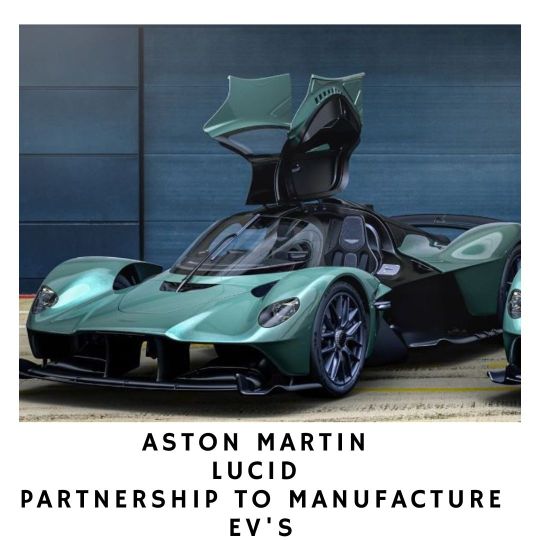
View On WordPress
#AstonMartinLucidPartnership#AutomotivePartnerships#ElectricPerformanceCars#ElectricVehicles#EV#EVManufacturing#FutureOfMobility#GreenTechnology#InnovationInMobility#LuxuryEVs#sustainabletransportation
0 notes
Text
The Rise of EV Globally

Written By: Jagriti Shahi
Introduction
In recent years, the global landscape of transportation has witnessed a paradigm shift with the growing adoption of electric vehicles (EVs). While much attention has been given to individual electric cars, there's a transformative trend that is reshaping the way businesses approach their transportation needs – the rise of electric fleets. Companies worldwide are increasingly recognizing the economic, environmental, and operational advantages of integrating electric vehicles into their fleet management strategies.
Rising of EV
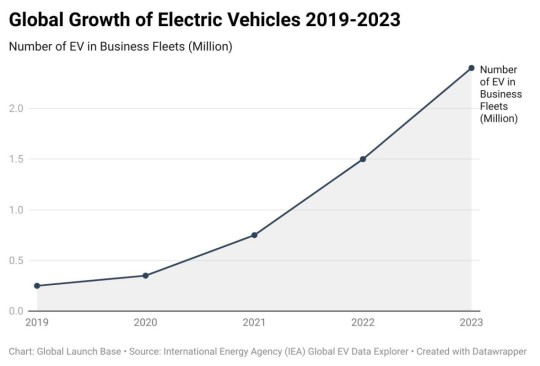
Figure: Global Growth of Electric Vehicles 2019-2023
Over the course of five years from 2019 to 2023, there has been a substantial evolution in the adoption of Electric Vehicles (EVs) within business fleets. In 2019, the count stood at 0.25 million EVs, a figure that saw a modest increase to 0.35 million in 2020. However, the momentum gained significant traction in 2021, with the number soaring to 0.75 million. The trend took a transformative leap in 2022, witnessing a remarkable surge to 1.5 million EVs integrated into business fleets. This positive trajectory continued into 2023, with a notable expansion, bringing the total to 2.4 million EVs. These escalating figures indicate a progressive shift towards sustainable and eco-friendly transportation solutions within corporate fleets, underscoring a growing commitment to reducing environmental impact and embracing cleaner mobility alternatives.
In recent years, the global landscape has witnessed a revolutionary shift towards sustainable practices, with a particular focus on the automotive industry. The transition from traditional internal combustion engine (ICE) vehicles to electric vehicles (EVs) has gained unprecedented momentum, signaling a new era for transportation. This article explores the speed of change in the electrification of vehicles, examining the factors driving this transition and the implications for the future of mobility.
Countries Transition to EV

Figure: Global EV Growth
As we can see, Norway leads the pack in terms of EV adoption, with a staggering 80% share of new car sales in 2022. However, India is experiencing the fastest growth, with an impressive 82% increase in EV sales year-over-year. This is likely due to a number of factors, including government incentives, the rising popularity of electric two-wheelers, and the increasing availability of charging infrastructure.
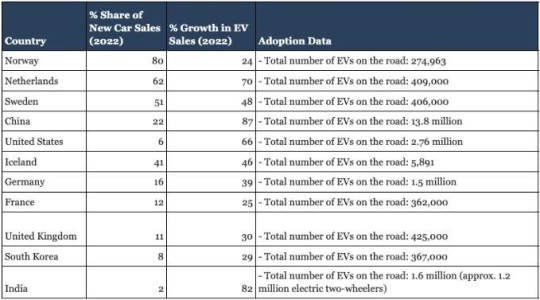
Norway: Norway has the highest EV market share in the world, with over 80% of new car sales being electric in 2022. The country has ambitious plans to phase out the sale of new gasoline and diesel cars by 2025.
Netherlands: The Netherlands has the second-highest EV market share in the world, with over 60% of new car sales being electric in 2022. The country has set a target of phasing out the sale of new gasoline and diesel cars by 2030.
Sweden: Sweden has a strong EV market, with over 50% of new car sales being electric in 2022. The country aims to have a fossil-fuel-free car fleet by 2040.
China: China is the world's largest EV market, with over 3 million EVs sold in 2022. The Chinese government has set ambitious targets for EV adoption, aiming for EVs to account for 20% of all new car sales by 2025.
United States: The United States is a growing EV market, with over 600,000 EVs sold in 2022. The US government has set a target of having 5 million EVs on the road by 2030.
India: India's EV market witnessed a significant surge in 2023, with sales growing by 82% compared to the previous year and 157% from FY2022 to FY2023. The electric two-wheeler market is currently the driving force, with over 1 lakh EVs sold every month in H2 FY2023.
Rapid Technological Advancements:
One of the primary drivers behind the swift transition to electric vehicles is the rapid advancement of technology. Breakthroughs in battery technology, energy storage, and electric drivetrain efficiency have significantly improved the performance and range of EVs. As a result, consumers are now presented with viable alternatives that not only match but often surpass the capabilities of traditional vehicles.
Government Initiatives and Policies:
Governments around the world have played a pivotal role in accelerating the adoption of electric vehicles. Many countries have implemented stringent emission regulations, incentivized the production and purchase of electric vehicles, and invested in charging infrastructure. These policy measures create a favorable environment for both manufacturers and consumers, fostering the rapid integration of EVs into the mainstream market.
Changing Consumer Preferences:
Consumer attitudes towards electric vehicles have undergone a remarkable transformation. With increased awareness of environmental issues and a growing emphasis on sustainability, more consumers are actively seeking eco-friendly transportation options. The appeal of electric vehicles extends beyond environmental concerns, as drivers are drawn to the lower operating costs, reduced maintenance requirements, and a smoother driving experience.
Before and After EV
The advent of Electric Vehicles (EVs) has brought about a transformative shift in the automotive landscape, marking a clear distinction between the era before and after the widespread adoption of electric mobility. Several key differences characterize these two periods:
Propulsion Technology:
Before EVs: The automotive industry predominantly relied on internal combustion engines (ICEs) powered by fossil fuels, such as gasoline and diesel.
After EVs: Electric vehicles use electric motors and batteries for propulsion, reducing or eliminating reliance on traditional fossil fuels. This shift represents a move towards cleaner and more sustainable energy sources.
Environmental Impact:
Before EVs: Internal combustion engines produced emissions, contributing to air pollution and greenhouse gas emissions, with detrimental effects on the environment.
After EVs: Electric vehicles produce zero tailpipe emissions, significantly reducing air pollution and contributing to efforts to combat climate change. The environmental benefits of EVs are a crucial factor driving their adoption.
Infrastructure Development:
Before EVs: The infrastructure primarily consisted of fuel stations for gasoline and diesel, with limited availability of charging stations for electric vehicles.
After EVs: The emergence of EVs has led to a rapid expansion of charging infrastructure, including public charging stations, home charging solutions, and fast-charging networks. This development addresses concerns about range anxiety and facilitates the widespread adoption of electric vehicles.
Government Policies and Incentives:
Before EVs: Government policies often focused on regulating emissions and fuel efficiency standards for internal combustion engine vehicles.
After EVs: Governments worldwide have introduced incentives and policies to promote the adoption of electric vehicles. These measures include tax credits, subsidies, and stricter emissions regulations to encourage a shift towards cleaner transportation.
Consumer Awareness and Perception:

Figure: Global Rise in Electric Vehicle Manufacturing: 2019-2022
Before EVs: Consumer awareness of electric vehicles was relatively low, and there were misconceptions about issues like limited range, performance, and charging infrastructure.
After EVs: Increasing environmental awareness, advancements in technology, and positive experiences with electric vehicles have led to a shift in consumer perceptions. More consumers now view EVs as viable alternatives with benefits such as lower operating costs, reduced maintenance, and a positive impact on the environment.
Automaker Strategies:
Before EVs: Traditional automakers focused primarily on the production of vehicles with internal combustion engines, with limited investment in electric mobility.
After EVs: Automakers are increasingly investing in electric vehicle technology, developing dedicated EV platforms, and announcing plans to transition to fully electric fleets. The competition in the electric vehicle market has intensified, driving innovation and improvements in battery technology and vehicle design
Economic Considerations:

Figure: Price Compression Over Time - 2019-2022
Before EVs: The economic landscape was heavily influenced by the fossil fuel industry, including oil extraction, refining, and distribution.
After EVs: The rise of electric vehicles has led to a shift in economic dynamics, impacting industries related to renewable energy, battery manufacturing, and electric vehicle production. This transition has implications for job markets, resource extraction, and economic sustainability.
Leading Emerging EV Companies
BYD Company Ltd. (China): BYD is a diversified company with a strong presence in the EV market. They produce a wide range of electric vehicles, including cars, buses, and trucks.
XPeng Inc. (China): Xpeng is a leading Chinese EV maker known for its premium sedans and SUVs. They have a strong presence in the Chinese market and are expanding into Europe.
Fisker Inc. (USA): Fisker is focused on designing and developing luxury electric vehicles with extended range and innovative features. Their first model, the Ocean SUV, is scheduled for production in late 2023.
Rivian Automotive (USA): Rivian is a manufacturer of electric trucks and SUVs. Their R1T pickup truck and R1S SUV are already in production and have received positive reviews for their performance and capabilities.
Canoo Technologies Inc. (USA): Canoo designs and develops electric vehicles for various applications, including delivery vans, passenger shuttles, and subscription-based personal vehicles. They have partnerships with Hyundai and Walmart, indicating their potential for future growth.
Polestar (Sweden): Polestar is a joint venture between Volvo Cars and Geely Holding Group. They offer high-performance electric vehicles and plan to launch new models in the coming years.
Euler Motors (India): Focuses on electric commercial vehicles, catering to the growing demand for clean and sustainable last-mile delivery solutions.
Ather Energy (India): Known for their high-performance and tech-integrated electric scooters, they have a strong presence in major Indian cities and are expanding their product range.
Tata Motors (India): This major player recently launched the Nexon EV, their first electric SUV, and plans to introduce more electric vehicles in the coming years.
The shift from the era before EVs to the current era reflects a broader global commitment to sustainability, technological innovation, and a transition towards a more environmentally conscious and energy-efficient transportation system.
About Global Launch Base:
Global Launch Base helps international startups expand in India. Our services include market research, validation through surveys, developing a network, building partnerships, fundraising, and strategy revenue growth. Get in touch to learn more about us.
Contact Info:
Website: www.globallaunchbase.com
LinkedIn: https://www.linkedin.com/company/globallaunchbase/
Email: [email protected]
Organisation Mentioned: Byd Company Limited XPENG Fisker Rivian Canoo Polestar Euler Motors Ather Energy Tata Motors
#ElectricVehicles hashtag#EVs hashtag#SustainableTransportation hashtag#GreenTechnology#hashtag#ElectricCarMarket hashtag#EVAdoptionTrends hashtag#RenewableEnergyVehicles hashtag#ChargingInfrastructure hashtag#EnvironmentalImpactOfEVs hashtag#GlobalElectricVehicleMarket hashtag#FutureOfTransportation hashtag#EVBatteryTechnology hashtag#ElectricVehicleIndustryGrowth#GovernmentIncentivesForEVs hashtag#EVManufacturers#ElectricVehicleRevolution hashtag#CleanEnergyTransportation#EVMarketAnalysis hashtag#EVSalesProjections hashtag#EVInvestmentOpportunities
0 notes
Text

List of Electric vehicle manufacturers in India
Empower your business with the future of mobility! Explore our comprehensive list of e-vehicle manufacturers, electric vehicle parts suppliers, and automotive industry players in India. Obtain valuable insights and data from 99 Data Cd in Excel, covering B2B, companies, professionals, exhibitors, city/state-wise, and international data. Seize the opportunity to thrive in the thriving e-vehicle sector with details on 1072 electric vehicle manufacturers, 1186 electric vehicle parts companies, and 7,492 e-vehicle and automotive businesses. Don't miss our exclusive 30% discount on data purchases. Join the e-vehicle revolution with 99datacd.com – Your gateway to success in the dynamic world of electric vehicles.
0 notes
Photo
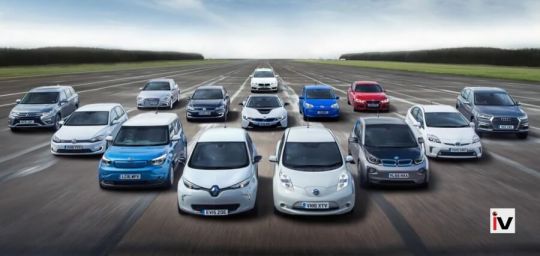
Top EV Manufacturing Companies. Electric vehicles are better for the environment thats why EV vehicle companies are in demand.
#EVManufacturers#ManufacturingIndustryMagazine#LeadingManufacturingMagazine#IndustrialMagazine#TopManufacturingCompanies#Manufacturing&EngineeringMagazine
0 notes
Text
Electric Vehicle Plastics Market: An In-Depth Exploration and its Contribution to a Circular Automotive Industry
The global electric vehicle plastics market size was estimated at USD 13.33 billion in 2030 and is anticipated to grow at a compound annual growth rate (CAGR) of 28.0% from 2024 to 2030. The industry is projected to witness significant growth in terms of consumption, on account of high application scope and increasing demand from the growing population. The Polypropylene (PP) resin demand in the Asia Pacific region is estimated to grow at the fastest CAGR over the forecast period. Strong government support & initiatives regarding emissions and increasing investment by manufacturers are propelling the growth of the region.
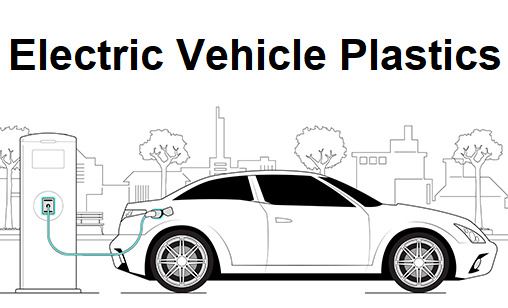
Electric Vehicle Plastics Market Report Highlights
The Asia Pacific region is estimated to grow at the fastest CAGR from 2022 to 2030. Increasing demand from the growing population coupled with environmental concerns among others are anticipated to drive market growth in the region
The battery segment is anticipated to register the fastest CAGR from 2022 to 2030. Batteries are one of the significant components of an EV and, in comparison to combustion engines, battery vehicles do not produce any emissions and are eco-friendly. The growing demand for EVs has promising growth for EV batteries
The exterior application segment accounted for the largest revenue share in 2021 and is estimated to continue its dominance over the forecast period due to the high demand in aesthetics
The BEV vehicle type segment led the industry in 2021 and it is anticipated to continue growing over the forecast period as PHEVs have higher maintenance costs than BEVs
For More Details or Sample Copy please visit link @: Electric Vehicle Plastics Market Report
Furthermore, EVs are efficient and require less maintenance as compared with traditional vehicles. These factors are expected to boost the demand for EVs, which is expected to drive the demand for plastics over the forecast period. Increasing utilization of plastics in EVs is anticipated to boost industry growth positively over the forecast period. Plastics have proven to perform well under harsh conditions through their resistance to shock, moisture, oxidation, and further maintaining their chemical and mechanical properties. Plastics will be crucial material for manufacturing lightweight and energy-efficient EVs. Based on resin type, PP is expected to witness major demand during the projected years.
Polypropylene is used in many components of the vehicle including bumpers, carpet fibers, cable insulation, and others. Properties, such as good heat, chemical & fatigue resistance, and others, are anticipated to drive the demand for PP in the industry. Major manufacturers are adopting expansion strategies, such as new product development, production facility expansions, mergers & acquisitions, and joint ventures. For instance, in October 2021, DuPont launched a new extension of its existing Zytel HTN range, named as Zytel 500 series. These products are developed to provide enhanced retention properties in e-mobility oils, electrically friendly characteristics, and a high Comparative Tracking Index (CTI).
EVPlastics #ElectricVehicles #SustainableDriving #EcoFriendlyCars #ElectricVehicleTech #CleanTransportation #GreenMobility #EVInnovation #PlasticsInEVs #FutureOfTransport #SustainableMaterials #EcoAutoDesign #EVManufacturing #PolymerInnovation #ZeroEmissionVehicles #GreenTechAuto #CleantechPlastics #EVDesign #EcoFriendlyPlastics #CircularAutoEconomy
#EV Plastics#Electric Vehicles#Sustainable Driving#Eco-Friendly Cars#Electric Vehicle Tech#Clean Transportation#Green Mobility#EV Innovation#Plastics In EVs#Future Of Transport#Sustainable Materials#Eco Auto Design#EV Manufacturing#Polymer Innovation#Zero Emission Vehicles#Green Tech Auto#Cleantech Plastics#EV Design#Eco-Friendly Plastics#Circular Auto Economy
2 notes
·
View notes
Text
Vietnamese EV Manufacturer VinFast will supply 2,500 Units Electric Car
#EVManufacturer #VinFast #ElectricCar
The auto brand of the Vietnamese corporation VinGroup, VinFast was created with the intention of igniting a global revolution in smart electric vehicles. The company was founded in 2017 in Hai Phong. It is the holder of a cutting-edge automobile manufacturing complex with industry-leading scalability and up to 90% automation.
VinFast is steadfastly committed to the goal of a sustainable future…
View On WordPress
0 notes
Photo

Ultraviolette Automotive to set up an EV manufacturing facility in Bangalore
Electric motorcycle manufacturer UltraViolet announced that it is setting up its manufacturing and assembly facility in Bangalore. The 70,000-square-foot facility will manufacture 15,000 electric motorcycles in the first year. This will rapidly increase to an annual capacity of 120,000 units.
#Ultravioletteautomative #EVmanufacturers #Bangalore #India
0 notes
Text
Top 10 Electric Bicycle Companies in USA
At ELE Times, we’ll explore the top 10 electric bicycle companies in the USA, shedding light on what makes them stand out in this thriving industry - Read More - https://www.eletimes.com/top-10-electric-bicycle-companies-in-usa
Some Important Links:
ELE Times Top 10 Series: https://www.eletimes.com/ele-times-top-10
Our Website: https://www.eletimes.com/

#ELETimes#ElectricBicycle#ElectricBicycleInUSA#ElectricBicycleCompanies#ElectricBicycleCompaniesInUSA#Top10ElectricBicycleCompaniesInUSA#EV#ElectricVehicle#eMobility#EVManufacturing#ElectricVehicleManufacturing#eMobilityManufacturing#EVManufacturingCompanies#ElectricVehicleManufacturingCompanies#eMobilityManufacturingCompanies#EVManufacturingCompaniesInUSA#ElectricVehicleManufacturingCompaniesInUSA#eMobilityManufacturingCompaniesInUSA
0 notes
Photo

#Government Plans to Invest INR 100 Billion to Incentivize #EVManufacturing in #India BIS Research is coming up with a market intelligence report, titled "Indian Electric Vehicles and Electric Vehicle Batteries Market − Analysis and Forecast, 2019-2030", which highlights growing prospects of electric vehicle (EV) production and assembly scenario in India, detailed supply chain analysis, separator demand by type analysis, and regional analysis on the basis of vehicle type.
#BIS Research#electric vehicle#Electric Vehicles#EV India#EV India news#EV News#EVs#Indian Electric Vehicles and Electric Vehicle Batteries Market
0 notes
Link
Top EV Manufacturing Companies. Electric vehicles are better for the environment thats why EV vehicle companies are in demand.
#EVManufacturers#ManufacturingIndustryMagazine#LeadingManufacturingMagazine#Manufacturing&EngineeringMagazine#IndustrialMagazine#TopManufacturingCompanies
0 notes